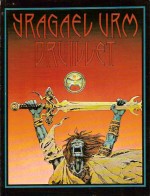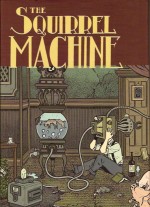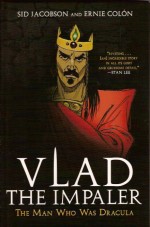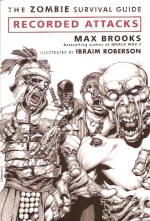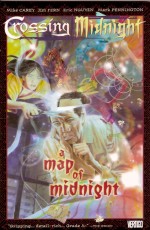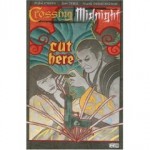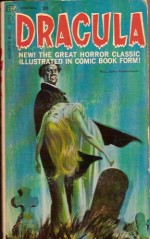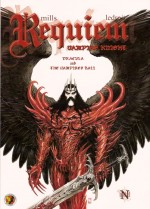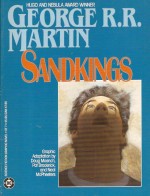
By George R. R. Martin, adapted by Doug Moench, Pat Broderick & Neal McPheeters (DC Comics)
ISBN: 0-930289-20-X
During the 1980s DC, on a creative roll like many publishers large and small, attempted to free comics narrative from its previous constraints of size and format as well as content. To this end, legendary editor Julie Schwartz called upon contacts from his early days as a Literary Agent to convince major names from the prose fantasy genre to allow their early classics to be adapted into a line of Science Fiction Graphic Novels.
This macabre and compelling novelette by George R.R. Martin was first published in the August 1979 issue of Omni Magazine and has won a bunch of literary glittering prizes including the Hugo, Nebula and Locus Poll Awards.
In 1995 it was rather harshly re-imagined as the debut episode of the relaunched TV anthology series The Outer Limits, premiering on 26 March: a terrifying parable of cruelty and obsession. Good as it was, this version pales into insignificance when compared to the prose original’s tone and setting, which adaptors Doug Moench, artist Pat Broderick, painter/colourist Neal McPheeters and lettering mastermind Todd Klein have scrupulously adhered to here.
As always, any adaptation – no matter how well executed – is absolutely no substiture for experiencing an artist’s work the way it was originally intended. So Go Read The Story. It’s one of the most reprinted and collected short stories of the last thirty years. However, as this is a place to review graphic novels, let’s proceed on the assumption that you already have or will…
The often inconsistent Broderick was on top form for this chilling cautionary tale of pride and human vice, perfectly augmented by the subtle tones of McPheeters whilst Moench’s idiosyncratic writing style is perfectly harnessed to catalogue the descent of Simon Kress, playboy, businessman, collector of alien animals and the planet Baldur’s most affluent closet sadist.
Kress is fascinated by animals. Not the cute, cuddly, unconditional love sort, but rather the kinds that rip and claw and eat each other. Returning from a trip he finds that his Earth Piranha had done just that, and his carrion hawk was gone too. Only his Shambler was still alive. His biggest regret was that he had missed all the action.
Bored and finding nothing interesting at his usual xeno-fauna outlets, he stumbles upon the strange emporium of traders Wo and Shade, and discovers the bizarre hive-mind arthropods dubbed Sandkings. Like ant colonies these creatures build homes and make war upon each other in a perpetual dance of resource redistribution. Their glass tank housed four queens or “Maws†who will produce colour-coded warriors to fight and drones to build beautiful hive-castles. To better produce new “citizens†the Maws can and will eat anything …
The creatures also possess a rudimentary telepathy, enough to assess the power of their owner, and reshape their environment to reflect and venerate his appearance. Relentless, creative killers that will worship him… how could any arrogant sociopath resist?
Soon the creatures are the toast of the playboy’s dissolute cronies. Parties where Kress’ debauched friends pit their pets against the Sandkings become legendary, and nothing can stand up to them: not Shamblers, Silver Snakes, Sand Spiders… No organic creature can survive long once it encroaches on their territory, since when not battling each other the creatures join forces to destroy any intruder. As the colonies increase in size, so necessarily does their tank. …
When Jala Wo checks up on her sale she finds most of the Sandkings thriving but one faction lags behind in castle-building. The Black, Red and White armies are healthy and vigorous, their eerie citadels displaying Kress’s face over and over again but the Orange bugs are suffering decline. Kress has been starving the creatures and wrecking their constructions to make them fight harder…
As the playboy sinks further into cruel depravity, his sickened girlfriend protests, even setting the planetary authorities on him. Judicious bribery easily solves that problem whilst the Sandkings themselves prove the perfect way to dispose of her. Unfortunately during her murder the tank breaks and the creatures all escape into the confines of his house and estate.
Panicked now, Kress goes on a bloody rampage, clearing up all the details (and witnesses) that could implicate him in murder and illegal xeno-form trafficking, but the damage is done. The Sandkings are loose, having staked new territory. Moreover they have declared war on the god who treated them so harshly… And that’s where the story really begins.
This chilling adaptation is comfortably traditional in its delivery, fully allowing the story to shine, and is a perfect companion to DC’s other adaptations. It a huge pity they’re all currently out of print. This is an experiment the company should seriously consider resuming and I’ll repeat what I’ve said before: all these previously published DC Science Fiction Graphic Novels would make an irresistible “Absolute†compilation…
Sandkings © 1979 Omni International, Inc.  © 1981 George R. R. Martin. Illustrations © 1986 DC Comics Inc. All Rights Reserved.

